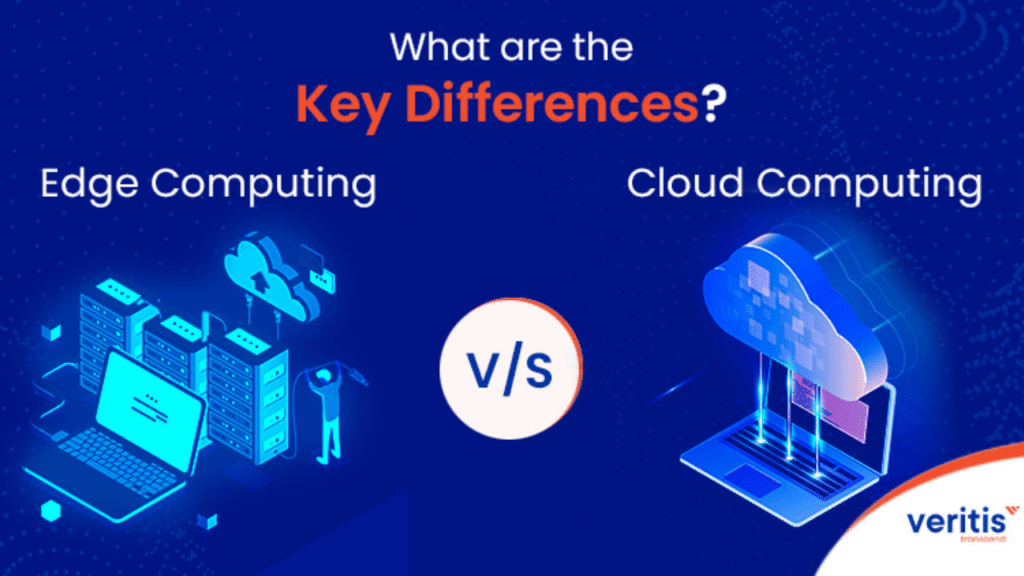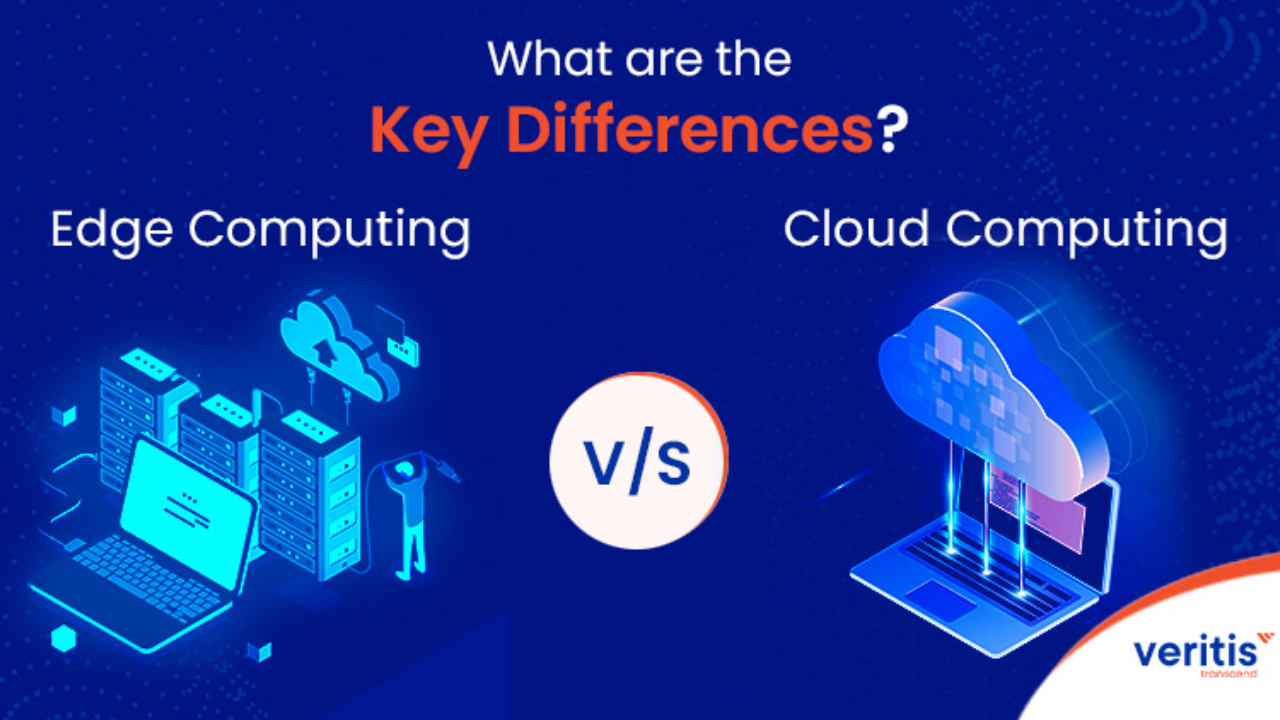
Overview Table: Edge Computing Simplified
| Aspect | Details |
|---|---|
| Definition | Processing data near its source rather than in a centralized cloud |
| Key Benefit | Ultra-low latency and faster real-time processing |
| Ideal Use Cases | IoT, autonomous vehicles, remote monitoring, AR/VR |
| Compared to Cloud | Lower latency, less bandwidth usage, but more complex infrastructure |
| Core Technologies | IoT, AI at the edge, 5G, micro data centers |
| Future Outlook | Explosive growth in AI, smart cities, and real-time edge analytics |
What Is Edge Computing?
Cloud computing transformed how businesses store, access, and process data. But edge computing is the next leap forward. Instead of sending data to distant cloud servers, edge computing brings computation and storage closer to the physical location where the data is created—whether that’s a sensor, smartphone, factory machine, or autonomous vehicle.
In simpler terms, it moves the cloud closer to where data is generated.
Why Edge Computing Is Exploding Right Now
Modern applications demand real-time decisions and instant data processing. Traditional cloud models can’t always keep up due to latency and connectivity limitations. Edge computing addresses these limitations by enabling local decision-making.
Key drivers behind the rise of edge computing include:
- Rapid growth of IoT devices generating massive data volumes
- The rollout of 5G enabling fast, local processing
- The need for AI-powered devices to act instantly
- Latency-sensitive applications like autonomous cars and AR/VR
- Poor connectivity in remote areas that require local data processing
How Edge Computing Works
Edge computing decentralizes computing by processing data near the data source rather than relying solely on central servers. This minimizes delay and improves efficiency.
Key components include:
- Edge Devices: Cameras, sensors, smartphones, wearables
- Edge Gateways: Devices that collect and forward data locally or to the cloud
- Edge Servers: Local computing units in factories, buildings, or vehicles
- Cloud Integration: Used for backup, large-scale analytics, or storage
Edge vs. Cloud Computing: What’s the Difference?
| Feature | Cloud Computing | Edge Computing |
|---|---|---|
| Location of Processing | Centralized in data centers | Near the data source |
| Latency | Higher (depends on network) | Extremely low (real-time) |
| Bandwidth Use | High due to constant data transmission | Lower with local data filtering |
| Use Cases | Email, SaaS apps, long-term storage | Real-time systems, IoT, robotics |
| Security | Centralized control | Many endpoints, more complex protection |
| Infrastructure | Cloud data centers | Distributed nodes and local processors |
Real-World Applications of Edge Computing
Autonomous Vehicles
Edge systems process sensor and GPS data in real-time, helping cars make instant decisions without cloud delays.
Smart Cities
Traffic signals, utility systems, and surveillance cameras operate more efficiently when decisions are made locally.
Healthcare
Wearable devices monitor vitals and trigger alerts without needing to send all data to a remote server.
Industrial IoT
Factories use edge for predictive maintenance and real-time automation, increasing uptime and safety.
AR/VR
Edge computing powers seamless virtual experiences by reducing lag in headsets and apps.
Benefits of Edge Computing
| Benefit | Description |
|---|---|
| Ultra-low latency | Enables split-second decisions near the device |
| Bandwidth efficiency | Only essential data is sent to the cloud |
| Offline functionality | Systems remain operational without continuous connectivity |
| Enhanced data privacy | Sensitive information stays local instead of being transmitted externally |
| Real-time analytics | Edge systems act on data as it’s generated |
Challenges of Edge Computing
- Security: More devices mean more vulnerabilities that must be secured individually.
- Management: Orchestrating, updating, and monitoring hundreds or thousands of nodes is complex.
- Cost: Initial hardware and infrastructure setup may be expensive.
- Integration: Synchronizing edge data with centralized systems requires advanced coordination.
- Scalability: Deploying consistent configurations across wide areas takes planning and automation.
Future of Edge Computing
The edge computing market is expected to surpass $150 billion by 2030. Key technologies like 5G, AI, and IoT are fueling this expansion. Cloud giants like AWS, Azure, and Google Cloud now offer edge-specific platforms such as:
- AWS IoT Greengrass
- Azure Stack Edge
- Google Anthos
These platforms allow businesses to deploy, manage, and monitor applications across cloud and edge environments seamlessly.
Is Edge Computing Replacing Cloud Computing?
No. Edge and cloud computing are designed to complement each other. Edge handles tasks that require fast, local responses, while the cloud supports deeper analytics, centralized storage, and global accessibility.
Most modern IT strategies will combine both for optimal efficiency.
Final Thoughts: The Edge Is Closer Than You Think
Edge computing is no longer futuristic—it’s here and expanding fast. From enabling life-saving responses in healthcare to creating ultra-responsive experiences in gaming, edge computing is redefining real-time data use.
As devices become smarter and data continues to grow, the move toward edge-first strategies is becoming inevitable. If your business needs faster insights, stronger privacy, or local autonomy, edge computing is your next big step.
3 Quick One-Line FAQs
Q1: Does edge computing need an internet connection to work?
No, many edge devices can operate and process data locally without constant connectivity.
Q2: Is edge computing safer than cloud computing?
It offers better local control but introduces more endpoints that require individual security.
Q3: Can AI run at the edge?
Yes, AI models are increasingly deployed at the edge for real-time decision-making without cloud delays.
Let me know if you’d like this turned into a shareable PDF, presentation, or infographic.

